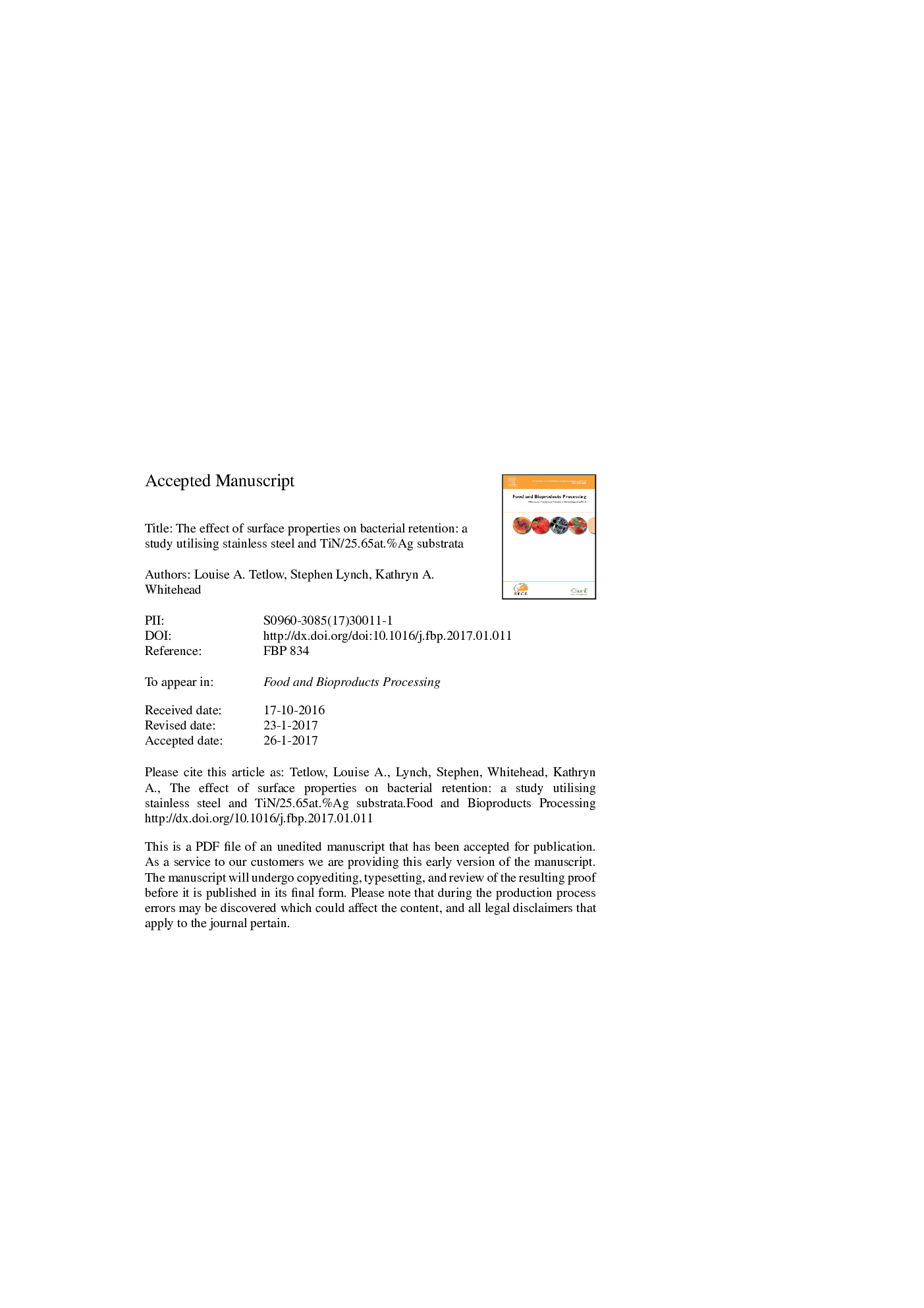| Article ID | Journal | Published Year | Pages | File Type |
|---|---|---|---|---|
| 4752978 | Food and Bioproducts Processing | 2017 | 26 Pages |
Abstract
The requirement for antimicrobial surfaces to control microorganisms for use in the food industries is increasing. A TiN/25.65at.%Ag coating and a stainless steel (304 2R) surface were characterised for roughness parameters, chemistry and physicochemistry (PC). Microbiological analysis was performed to determine the antimicrobial efficacy and retention of Staphylococcus aureus and Escherichia coli on the surfaces. Zone of inhibition assays were successful against only E. coli on the TiN/25.65at.%Ag coating. A bacterial respiratory assay demonstrated that the TiN/25.65at.%Ag coating was antimicrobial against both bacteria. Retention assays demonstrated that the physicochemistry of the bacteria and surfaces influenced bacterial retention. Multifractal analysis of the retained bacteria demonstrated that the surface properties affected the spread and clustering, but not the density of the bacteria. This work suggests that surface properties influenced specific species: surface interactions and therefore surfaces need to be tailored to specific requirements depending on the environment and microorganisms to be targeted. This work may aid in the production of coatings or surfaces that may provide more hygienic conditions.
Related Topics
Physical Sciences and Engineering
Chemical Engineering
Bioengineering
Authors
Louise A. Tetlow, Stephen Lynch, Kathryn A. Whitehead,
